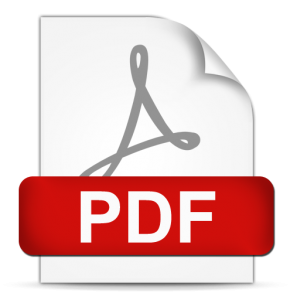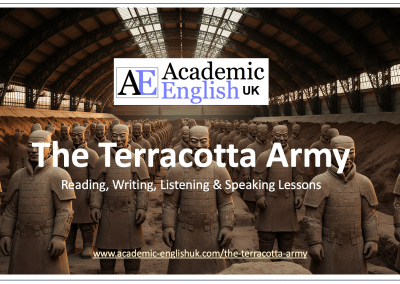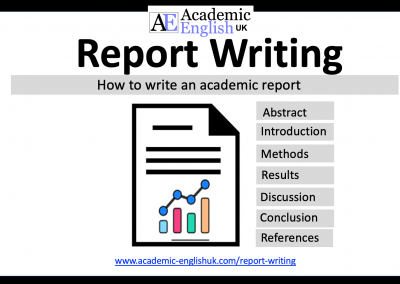Academic Projects
Introduction
Most college and university courses assess their students learning through some kind of project. This not only measures the student’s achievement, but also helps to show whether they are prepared for the following academic year. The type of project that is selected very much depends on how many weeks and how much class time is allocated to the project, how much independent study the students will need to do outside of class, what kind of assessments your educational provider wishes to focus on and the type of assessments that the student will do in the next academic year.
Project suggestions
Although there are many types of projects, broadly speaking we have put together the most common ones:
- Posters
- Portfolios.
- Research reports.
- Essays.
For each one, we provide a definition, a rationale and suggestions for creating/writing the project. At the end of the document, we provide some guidelines for assessment.
1. Academic Posters
Definition
Academic posters are a visual form of communicating academic research, projects or literature reviews that often combine elements of text and diagrams to convey ideas in a clear and concise way. Although traditionally used in hard science disciplines, this method of assessment is becoming increasingly common in many other disciplines too.
Rationale
A student can demonstrate several skills through producing a poster: project management, teamwork, research skills, source selection, reading strategies, synthesising sources, summarising ideas concisely, referencing and illustrating their points through text and visuals.
Creating academic posters
You will need to decide if you want your students to create the posters to print or display electronically. In both cases, a single-power-point slide is very effective. If you wish the posters to be printed, then just make sure you change the slide size to the size you wish the posters to be; e.g., A3, and select whether you want landscape or portrait.
2. Academic E-Portfolios
Definition
An academic e-portfolio is a collection of students work that represents their efforts and achievements in particular areas over a specified period. The learner is involved in the process as they are responsible for setting initial learning goals and selecting the best methods to achieve these goals through a process of reflection and evaluation.
Rationale
They promote reflection and critical thinking, help to foster learner autonomy, help students to see gaps in their learning, provide a bridge between learning and assessment, encourage life-long learning, and also provide a digital record of achievement.
Creating academic e-portfolios
You will need to decide where you want your students to create the portfolios: OneNote or OneDrive are two good options (See here for OneDrive instructions), and you will need to set these up in advance. You will also need to agree a day per week when you will check their work and give them some feedback and feedforward tasks.
3. Research Report
Definition
A research report is an extended essay that presents a research question that the student sets out to answer through a process of primary research, such as surveys, interviews, observations or experiments, and secondary research, such as books, journals and articles.
Rationale
The student learns and shows a wide range of skills: Time management, formulating a research question, research skills, creating a research instrument, data collection, data analysis, text organisation, creating figures, synthesising, summarising and referencing.
Creating research reports
There are many different types of research reports, but they all share a similar structure and involve similar skills. One thing you need to think about is whether you want the students do primary and secondary research or just secondary.
For more information on the structure and purposes of reports go here:
4. Academic Essays
Definition
An essay is a piece of academic writing in response to a particular question or an issue. Essays involve writing clearly and concisely about a topic, taking a particular stance or position, building an argument, inductive reasoning and using examples and explanations to support the claim put forward.
Rationale
The student will learn how to manage their time, analyse a title, find and evaluate sources, select relevant information through the use of reading strategies, select an appropriate essay structure, write an outline, respond to feedback, synthesise, summarise, paraphrase and reference sources as well as redraft and edit their work.
Creating essays
You will need to select the best type that suits the goals of the course and the subject the students are studying or preparing to study, but here are some common essay types that we have found popular in on EAP courses at UK universities: argument, compare and contrast, SPSE (situation, problem, solution evaluation), SWOT analysis (strengths, weaknesses, opportunities, threats), cause and effect, extended definition and reflective writing.
Benefits & Drawbacks of Assessment
If there is time in assessment week, then assessing the written and presented project has several benefits for the teacher and the student. These along with the drawbacks are outlines below.
Benefits
Teacher: You can see clearly how much they have learnt about the topic through reading about their project and listening to the students discuss and evaluate their project. You can also ask them evaluative, analytical and reflective questions to get a more in-depth response.
Student: Provides useful practice in both written and public speaking skills leading to more confident individuals. You will be giving them the opportunity to demonstrate the work that they have been working on throughout the semester.
Drawbacks
Teacher: Assessments are time consuming, and presentations in particular can take up a few days depending on the number of students, so therefore enough time would need to be allocated. You will also need to make sure you know the student’s project well before they present in addition to allowing adequate time for questions.
Student: Some students find presentations particularly challenging so if the course allows, students could record their presentations rather than doing it live and submit it through your institute’s Blackboard or similar.
Syllabus Download
12-Week Academic Syllabus (new 2023)
This 12-week syllabus is a guide to how our materials can be used on an academic English course. The course progresses through building a foundation of academic competence to enabling students to analyse and evaluate reading & listening texts effectively. The syllabus includes formative and summative tests, a reflective e-portfolio and project work. Example syllabus. Level: ***** [B1/B2/C1] TEACHER MEMBERSHIP / INSTITUTIONAL MEMBERSHIP
6-Week Academic Syllabus (new 2023)
This 6-week syllabus is a guide to how our materials can be used on an academic English course. The course progresses through building a foundation of academic competence to enabling students to analyse and evaluate reading & listening texts effectively. The syllabus includes formative and summative tests, a reflective e-portfolio and project work. Example syllabus. Level: ***** [B1/B2/C1] TEACHER MEMBERSHIP / INSTITUTIONAL MEMBERSHIP
Writing Criteria
Essay writing criteria x 2 (updated 2023)
There are two writing criterion in this download. One is a basic marking criteria that can be used to mark students’ general writing and the other criteria includes the use of sources. They are divided into three sections of Task (40%) / Organisation (30%) / Language (30%) and have five grade levels A-F. It is a word document so you can add or change any of the rubric to suit your writing test. Example Level: ***** [B1/B2/C1] TEACHER MEMBERSHIP / INSTITUTIONAL MEMBERSHIP
*
Poster Writing Criteria
Poster writing criteria (new 2023)
This poster criteria is similar to the essay writing criteria but includes the use of images. It is divided into three sections of Task (40%) / Organisation (30%) / Language (30%) and have five grade levels A-F. It is a word document so you can add or change any of the rubric to suit your writing test. Example Level: ***** [B1/B2/C1] TEACHER MEMBERSHIP / INSTITUTIONAL MEMBERSHIP
*
Seminar Criteria
 Seminar speaking criteria x 2 (updated 2023)
Seminar speaking criteria x 2 (updated 2023)
This includes one basic seminar speaking criteria to assess seminar speaking skills and contains four key criteria: Language Accuracy (20%), Language Range (20%), Pronunciation (20%) & Communicative Effectiveness (40%), and one seminar criteria that includes ‘reference to materials’. Example Level: ***** [B1/B2/C1] TEACHER MEMBERSHIP / INSTITUTIONAL MEMBERSHIP
Presentation Criteria
Presentation speaking criteria (updated 2023)
This is a basic criteria to assess & grade presentation speaking skills. It has three key criteria: Language Accuracy & Language Range (25%), Fluency & Pronunciation (25%) and Presentation & Engagement (50%). Example Level: ***** [B1/B2/C1] TEACHER MEMBERSHIP / INSTITUTIONAL MEMBERSHIP
E-Portfolio Presentation Criteria
E-portfolio presentation speaking criteria (new 2023)
This is a marking criteria to assess & grade the e-portfolio presentation speaking skills. It has four key criteria: Task Fulfilment & Content (40%), Language Accuracy & Language Range (20%), Fluency & Pronunciation(20%) and Presentation & Engagement (20%). Example Level: ***** [B1/B2/C1] TEACHER MEMBERSHIP / INSTITUTIONAL MEMBERSHIP
Poster Downloads
Poster blog page link
Academic Posters
Academic Posters 1: An Introduction (new 2023)
This lesson is designed to help students to understand what an academic poster is and what the features of an academic poster are. It contains a range of exercises to help them as well as an activity where they analyse a first draft poster for things to improve and a final draft poster for its strengths and weaknesses. The students then create their own posters using a given topic and template. Example. Level: ***** [B1/B2/C1] / PPT Slides (link in paid download) TEACHER MEMBERSHIP / INSTITUTIONAL MEMBERSHIP
Academic Posters 2: Academic Poster Guidelines (new 2023)
This lesson provides a detailed set of guidelines to create an academic poster. It includes a first draft scientific poster with 10 mistakes and a final draft for comparison. The students can then create an academic poster based on these guidelines. Example. Level: ***** [B1/B2/C1] / Video / PPT Slides (link in paid download) / TEACHER MEMBERSHIP / INSTITUTIONAL MEMBERSHIP
E-Portfolios Downloads
E-Portfolios blog page link
Academic E-Portfolios
Academic E-Portfolios (new 2023)
This lesson is designed to help students create an academic e-portfolio. It contains a range of exercises to help them understand what it is, why it is used, what makes an effective goal, how to show evidence of learning and how to reflect and evaluate. It includes a template the students can use to start creating their own e-portfolios. Example. Level: ***** [B1/B2/C1] TEACHER MEMBERSHIP / INSTITUTIONAL MEMBERSHIP




















